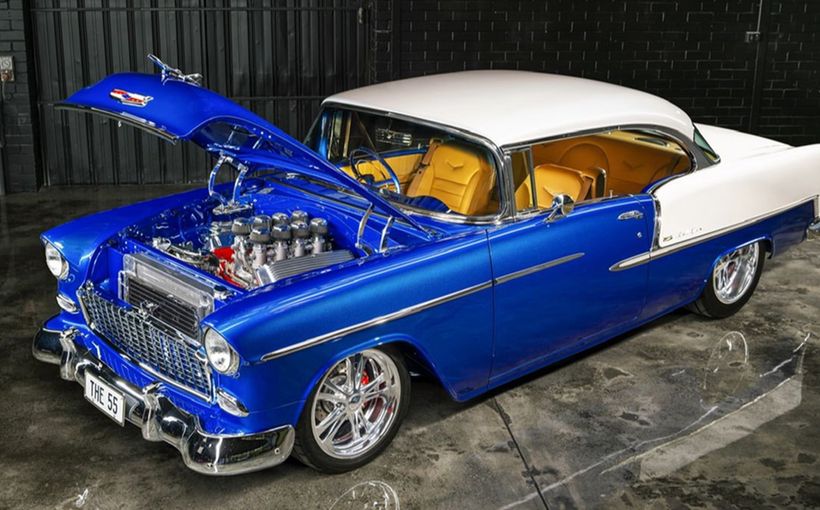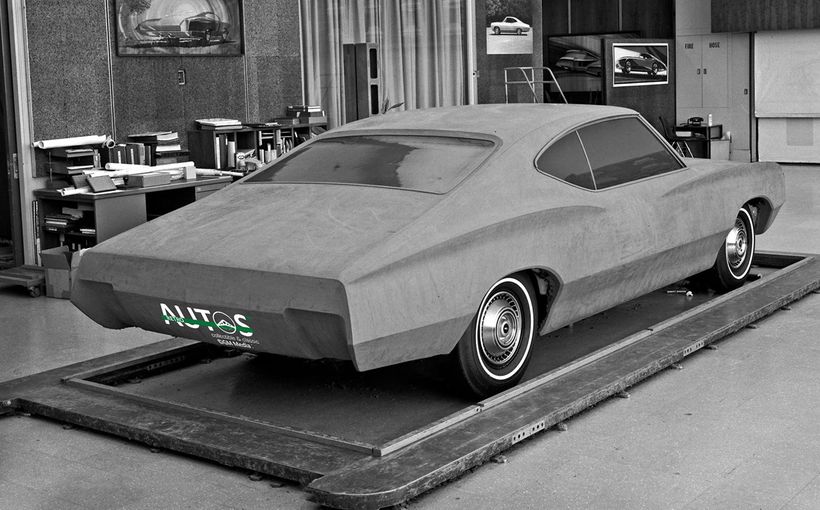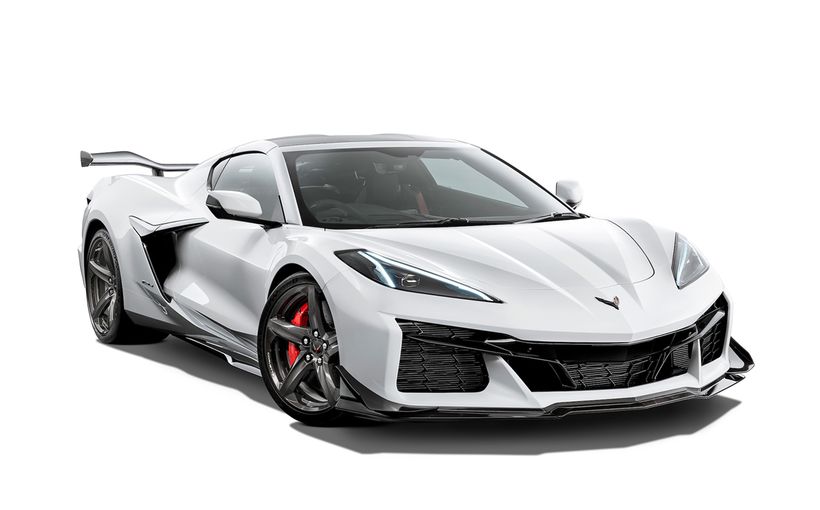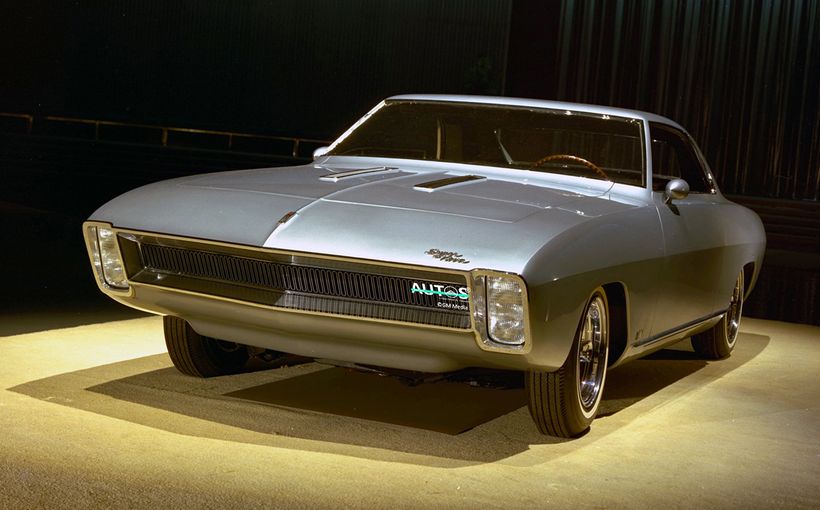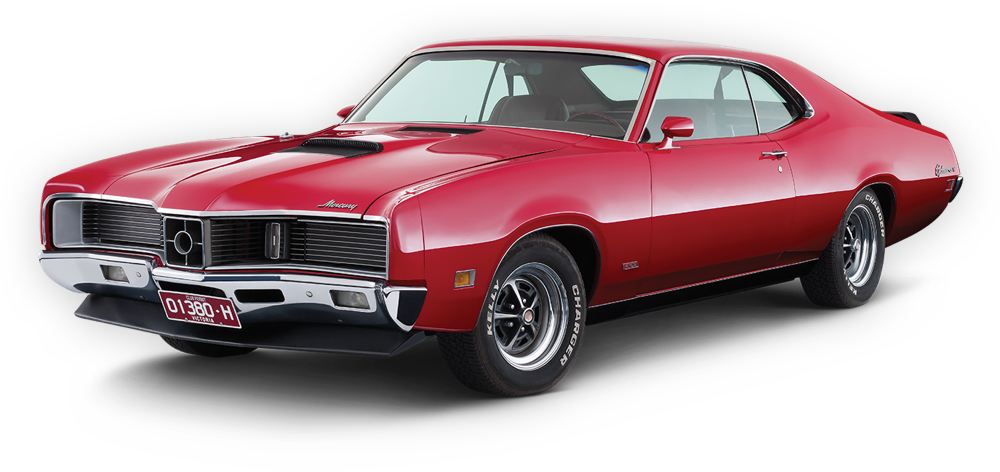Chevrolet Corvair: $4 Short of Brilliance

In the US fall of 1959, the so-called ‘Big Three’ carmakers launched their new ‘compact’ models. Chevrolet showed its rear-engined Corvair at the Paris Salon; in comparison the Ford Falcon and Plymouth Valiant seemed conservative with their six-cylinder engines mounted in the front like practically every other American car produced since World War Two other than the extraordinary Tucker Torpedo.

Image: wheelsage.org
I have a strong recollection as a car-crazed nine-year-old reading about the new compacts in my copy of Modern MOTOR in the playground at Glen Iris State School. That day I learnt two new words whose meaning soon became very clear in an automotive context. The first was ‘orthodox’ as a descriptor of the Falcon and Valiant. The second was ‘radical’ for Chevrolet’s bold rear-engined Corvair.

Image: wheelsage.org
The Corvair captured the imagination of enthusiasts worldwide in 1959, every bit as radical – albeit in the opposite way – as the Issigonis Mini-Minor announced almost contemporaneously. It was Motor Trend’s 1960 Car of the Year, superseding the previous season’s ‘wide-body’ Pontiac.
While the Falcon and Valiant were essentially more compact versions of the typical Detroit offering, the Corvair was beautifully styled and was unique, in many ways more like a genuine American alternative to a Volkswagen or even similar-sized models like the Peugeot 403 and Volvo Amazon. Like the Volkswagen, which provided the template, Chevrolet’s newcomer had an air-cooled horizontally-opposed engine mounted right out the back and swing-axle rear suspension. But the Corvair was twice as powerful and had an even more pronounced rearward weight bias of 64:36.

Image: wheelsage.org
It delivered lively performance with good fuel economy. The spacious interior with no transmission tunnel could accommodate six. Driving enthusiasts loved the Corvair’s responsiveness, but only a small proportion of purchasers were keen and knowledgeable drivers.
Its designer Ed Cole wanted a front anti-roll bar as standard and the car came with mounting points. But in August 1958 finance guy Frederic G. Donner took over the helm of GM and mandated cost-cutting wherever possible. The front bar, which would have cost just $4 per car was deleted; for context, two-tone paintwork was an $11 option! This cut-price compact rode on skinny wheels and cheap tyres.
Even before the Corvair was released, Chevrolet engineers understood that in inexperienced hands the car was too prone to lift-off oversteer and rollover. The first hand-built prototype was accidentally rolled by an engineer at the proving ground.

Image: wheelsage.org
Put simply, if the rear tyres weren’t inflated to at least 26 pounds (cold), the risk of a tyre rolling off the rim under heavy cornering loads increased dramatically. Oddly, just 15 psi (cold) was specified for the front tyres with the daft idea of promoting understeer and it is easy to see how with neglect 15 pounds could drop to 10 or even less! But with 26-plus pounds per square inch all round, the Corvair’s cornering limits were higher than those of a typical US sedan: in this respect, Chevrolet was surely its own worst enemy? (A small note near the end of the owner’s manual pointed out the importance of correct tyre pressures and mentioned the risk of oversteer without explaining the term. But in 1961, William F. Sherman, technical director of the Automobile Manufacturing Association, noted: ‘We’ve long since given up on the idea that the motorist will read the owner’s manual.’)
In the fall of 1961 Chevrolet introduced an effective and inexpensive fix, the optional RPO 696 heavy-duty suspension package, incorporating the front anti-roll bar, limiter straps for the rear swing axle, stiffer dampers and springs, priced at just $10.80. But it was not until model year 1964 that the front bar was fitted to all new Corvairs as part of a thorough suspension upgrade including softer rear coils and an additional transverse leaf spring.

Image: wheelsage.org
On debut, the Corvair was sold as a sedan only in base ‘500’ guise or up-spec ‘700’. The transmission choice was three-speed floorshift gearbox or optional two-speed Powerglide automatic. New variants arrived and by 1962 there were wagons, a van, half-ton trucks and elegant coupes and convertibles headed by the luxurious Monza 900 Club, which could be specified with four-on-the-floor.

Image: wheelsage.org
The flagship Monza 900 Club showed the future for Corvair. By this time, it was already being positioned as a range of economical sporty cars rather than typical compacts. Sales for 1961 approached 300,000, ahead of the Valiant but well behind the Falcon; the utterly conventional and slightly larger Chevy 2/Nova though would challenge Ford’s entrant in 1962; the one-size-up Chevelle followed in 1964.

Image: wheelsage.org
During this same model year, Chevrolet upped the Corvair ante with the $317 Monza Spyder option, the focus of which was a 150-horsepower turbocharged engine, heavy-duty suspension, lower final drive and a full set of gauges (including a tachometer) set in brushed metal trim to drive owners’ hearts to the redline. In what was to become curious GM parlance, the four-speed gearbox and sintered metallic brake linings (the year before Holden’s EH S4!) were described as ‘mandatory’ options.

Image: wheelsage.org
By then, the second generation Corvair was already in the oven. This one would be, at least in up-spec Monza Corsa (‘Corsa’ replacing ‘Spyder’) guise America’s answer to the Porsche 911.

Image: wheelsage.org
Released for model year 1965, it was this Corvair that unreservedly earns Super Model status. The 1960-64 cars were appreciated by keen owners, many of whom would have had the suspension and tyres upgraded by aftermarket specialists or by having RPO 696 retrospectively fitted by their local dealer. But the 1965 Corvair received international acclaim as one of the most beautiful designs ever to emerge from Detroit.
David E. Davis, Jr. wrote in the October 1964 issue of Car and Driver:
… we have to go on record and say that the Corvair is — in our opinion — the most important new car of the entire crop of ’65 models, and the most beautiful car to appear in this country since before World War II.
When the pictures of the ’65 Corvair arrived in our offices, the man who opened the envelope actually let out a great shout of delight and amazement on first seeing the car, and in thirty seconds the whole staff was charging around, each wanting to be the first to show somebody else, each wanting the vicarious kick of hearing that characteristic war-whoop from the first-time viewer.
Our ardour had cooled a little by the time we got to drive the cars — then we went nuts all over again. The new rear suspension, the new softer spring rates in front, the bigger brakes, the addition of some more power, all these factors had us driving around like idiots — zooming around the handling loop dragging with each other, standing on the brakes — until we had to reluctantly turn the car over to some other impatient journalist … The ’65 Corvair is an outstanding car. It doesn’t go fast enough, but we love it.

Image: wheelsage.org
The 1965 Corvair was longer and wider, with an all-new multi-link rear suspension. Here was the first American car – aside from the 1963 Corvette with fully independent suspension all round. The bigger brakes came from the Chevelle. Whether you chose two doors or four, the hardtop roof and curvaceous lines contrasted markedly with typical Detroit designs of the time.
The turbo six, optional at $158, now produced 180 brake horsepower. The naturally aspirated 140-horsepower unit was standard in the new Monza Corsa coupe and convertible. The turbo version was properly quick, reaching 100km/h in 11 seconds and peaking at 185km/h.
In summary, the Corvair was never as bad as critics headed by Ralph Nader suggested and, to put it mildly, General Motors’ budget over-consciousness put the radical new car at a great disadvantage. By the time this was reversed with the wonderful second-gen models (1965-1969), Ford’s Mustang had bolted!




